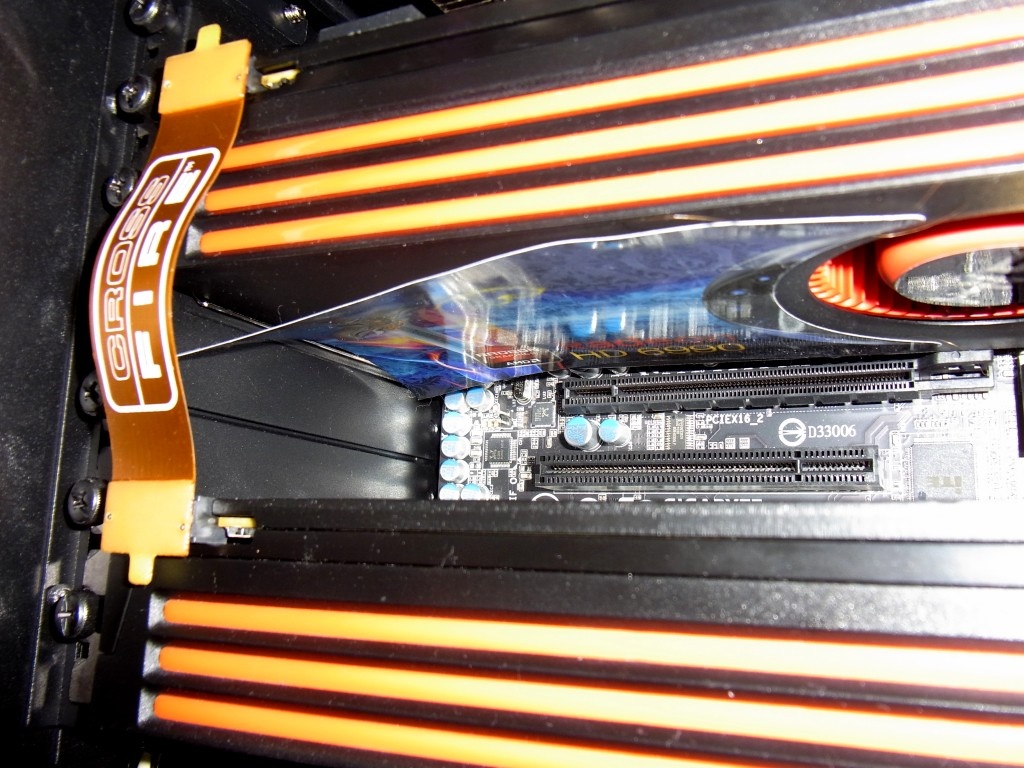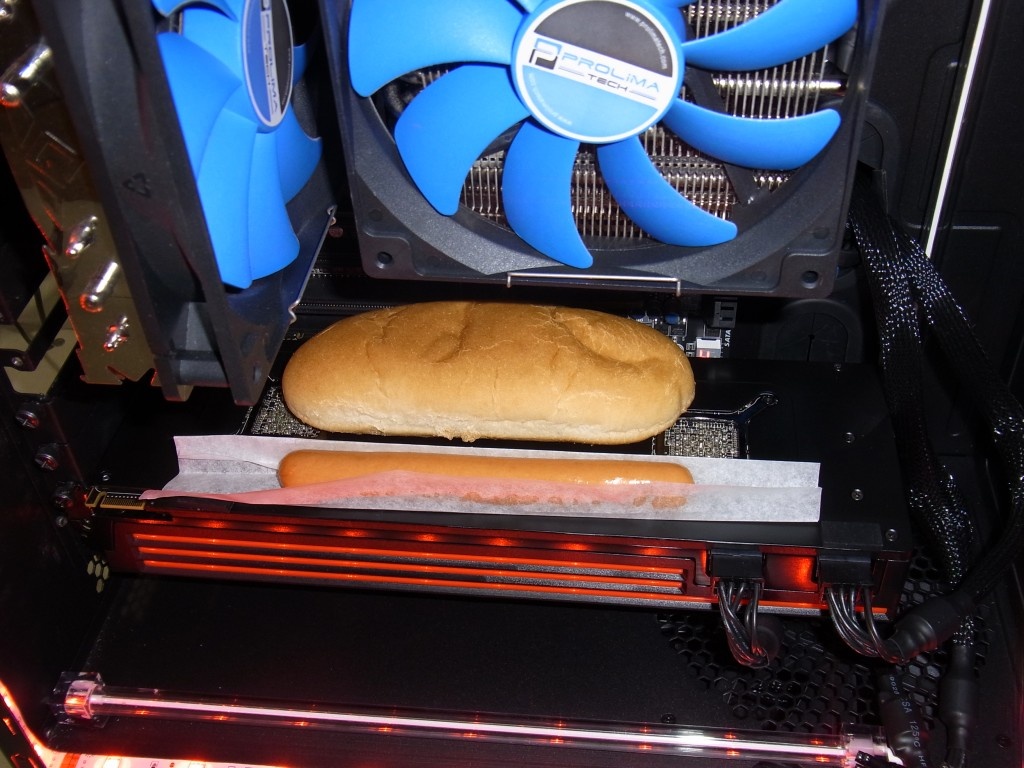How to Stress-Test CPUs and PCs (Like We Do)
Is it getting hot in here?
Conclusion: The Best Stress-Test Tools & Settings
Testing Maximum CPU Load
If your goal is to maximize power consumption and generate as much waste heat as possible to ensure your thermal solution is sufficient, then power viruses like Prime95 with AVX and Small FFTs, powerMAX, or AIDA64’s Stress FPU option are the way to go. However, these stress tests aren’t representative of the loads from commonly used applications. That's because most desktop software doesn't use AVX instructions the way artificially demanding workloads do. To simulate everyday scenarios, stress tests that tax your hardware using SSE code paths are the way to go.
Combine a tool like that with MSI Kombustor’s GPU Core Burner or Memory Burner for an excellent worst-case platform scenario. Even a game like The Witcher 3 can help you create similar or worse power consumption numbers than a lot of popular graphics stress tests.
Optimizing CPU Cooling
Your cooler should be set up so that it’s able to deal with these extreme loads, regardless of the code path responsible for them. And don't forget chassis ventilation. Many enthusiasts build great-looking custom water-cooling loops, but then forget that the motherboard needs active cooling in certain areas, else it'll overheat as well. Without at least some airflow, the board's VRMs might not last long.
Optimizing the Noise Level
Fortunately, airflow through your chassis can be temperature-controlled. Once the maximum temperature is known, a good combination of CPU and GPU stress testing can be used to simulate demanding gaming loads. MSI Kombustor and OCCT are particularly well-suited for this task if they’re configured as we described. The results of those tests may then be used to form the basis for fan-curve optimization by reserving the most aggressive fan speeds for the range approaching your ceiling.
Stability Testing & Its Limits
None of the pure stress tests guarantees 100% stable everyday operation. All they’re really good for is finding the system’s thermal and electrical limits. Everything else, especially when it comes to overclocked components, can be truly found out only by using suitable applications run over a long period of time. Prime95 and its contemporaries aren’t really designed to find errors, because they are fairly simple computational tools that serve one purpose: to consume a lot of power. (At least that's the case for Prime95's torture-test mode.)
Conclusion
With some thought and the right applications, most of which are free, you're able to test for cooling capacity and operational safety. These tests can (and should) be repeated periodically in order to suss out any changes due to aging components. In the beginning, testing every six months is sufficient, with the intervals between tests decreasing as the PC ages, especially if it’s used a lot or very intensively. It doesn’t matter if it’s been overclocked or not. Better safe than sorry!
MORE: Best CPUs For Gaming
Get Tom's Hardware's best news and in-depth reviews, straight to your inbox.
MORE: Intel and AMD Processor Benchmark Hierarchy Comparisons
MORE: All CPUs Content
Current page: Conclusion: The Best Stress-Test Tools & Settings
Prev Page System: Measuring Temperature With Different Stress Tests
Igor Wallossek wrote a wide variety of hardware articles for Tom's Hardware, with a strong focus on technical analysis and in-depth reviews. His contributions have spanned a broad spectrum of PC components, including GPUs, CPUs, workstations, and PC builds. His insightful articles provide readers with detailed knowledge to make informed decisions in the ever-evolving tech landscape
-
WINTERLORD Is this like a fancy water cooler im guessing? what about a typical AIO cooler. In fact i have a skyth fuma but may save up to get some kind of AIO water cooling been tryin to find decent reviews on decent water coolers both cheap and if needed high end. not no alpha cooler though lolReply
Alphacool Eisblock XPX ($73.99 On Newegg)
Alphacool Eiszeit 2000 Chiller -
FormatC This is a high-end compressor cooler for up to 1500 watts heat input. It's a modified version from industry and mostly used to cool the head of powerful laser cutters. Why I'm using this one? To show, which program is able to do it right. If you have additionally limitations from coolers, thermal throttling and other funny things, you will never see the exact difference. I can keep a constant water temperature of 20°C to make all the test results comparable. ;)Reply -
Th_Redman What did you guys put on the hotdog after testing? A little mustard, ketchup, relish, sauerkraut...? LOL.Reply -
aquielisunari I use Aida, Prime 26.6, Superposition, UserBenchmark, MSI's kombustor and I no longer use Heaven. I may be forgetting a couple. But something has always felt a little off. I finally see what it was. My build was missing a hotdog and its bun. I always do love learning from the pros. I placed it on a piece of parchment and instantly I notice a difference.Reply
I routinely check temperatures, loads and other info from my system. I also stress test with different CPU and GPU benchmark/stress test software. Thanks for the info. Page bookmarked. -
CompuTronix As the author of the Intel Temperature Guide - http://www.tomshardware.com/forum/id-1800828/intel-temperature-guide.html - I can fully appreciate how much work went into creating this outstanding article, which has been sorely needed!Reply
Since most users test their rigs without a sense of scale for power and temperature, they can't compare apples to apples, especially when combined with major variables such as differences in ambient temperature, hardware configurations and software utilities. This article provides a perspective and some excellent comparisons.
The Intel Temperature Guide differs in its approach toward the topic of processor Core temperatures and cooling with respect to Intel's TDP specifications, and distinguishes between steady workloads for thermal testing versus fluctuating workloads for stability testing. Nevertheless, our results are very similar.
However, since Intel validates their thermal specifications at a steady 100% TDP, it's most appropriate to select utilities that don't overload or underload the CPU. The only utilities I've ever found that come as close as possible to 100% TDP are Prime95 v26.6 Small FFT's as a steady workload for thermal testing, and Asus RealBench as a fluctuating workload for stability testing.
Although the topic of Prime95 (with and without AVX) was covered, I would like to have seen RealBench included in your test suite,since it's widely accepted as an excellent utility for testing overall system stability, and uses a realistic AVX workload.
Otherwise, great work! I was very pleased to read this article!
CT :sol: -
cangelini Reply20741319 said:As the author of the Intel Temperature Guide - http://www.tomshardware.com/forum/id-1800828/intel-temperature-guide.html - I can fully appreciate how much work went into creating this outstanding article, which has been sorely needed!
Since most users test their rigs without a sense of scale for power and temperature, they can't compare apples to apples, especially when combined with major variables such as differences in ambient temperature, hardware configurations and software utilities. This article provides some excellent comparisons.
The Intel Temperature Guide differs in its approach toward the topic of processor Core temperatures and cooling with respect to Intel's TDP specifications, and distinguishes between steady workloads for thermal testing versus fluctuating workloads for stability testing. Nevertheless, our results are very similar.
However, since Intel validates their thermal specifications at a steady 100% TDP, it's most appropriate to select utilities that don't overload or underload the CPU. The only utilities I've ever found that come as close as possible to 100% TDP are Prime95 v26.6 Small FFT's for thermal testing, which is a steady workload, and Asus RealBench for stability testing, which is a fluctuating workload.
Although the topic of Prime95 (with and without AVX) was covered, I would like to have seen RealBench included in your test suite, as it's widely accepted as an excellent utility for testing overall system stability, and uses a realistic AVX workload.
Otherwise, great work! I was very pleased to read this article!
CT :sol:
That's an awesome resource, CT! -
WyomingKnott Reply20740696 said:What did you guys put on the hotdog after testing? A little mustard, ketchup, relish, sauerkraut...? LOL.
Thermal compound. Why not? People have used condiments between their CPUs and their coolers. -
FormatC Step 1 - Collect all what I need:Reply
Step 2 - Start the oven
Step 3 - Enjoy!
The benchmark:
The complete review was so funny, but it was never translated :(

